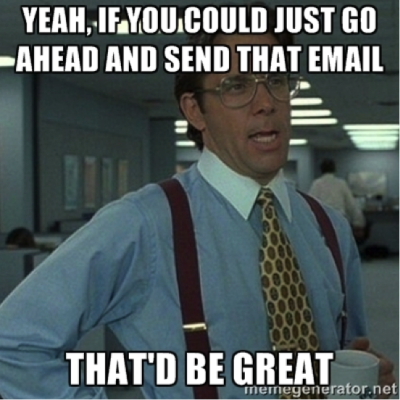Who Created Your Email Strategy? It’s Time To Own It
Has your email marketing program been chugging along with no course changes in years? Columnist Andrew King advises how to step back and move things forward.

“Who created your email strategy?” is an interesting question.
I’ve worked with a lot of organizations that have been sending email marketing campaigns for a very long time (10+ years), but no one has ever really stepped back and asked themselves why they are sending certain types of email, nor have they ever re-evaluated their overall strategy.
Organizations are so caught up in the minute detail of email marketing, such as creating hyper-targeted segments, super-responsive designs, sophisticated deliverability tactics, etc.
While these things are all important, there should be an overarching strategy that guides your program.
Quite often, I find that companies have no real strategy in place. The email contact plan was created by an intern in 2006 and hasn’t changed since. There also always seems to be a director with no knowledge of email marketing who needs to send an irrelevant campaign to everyone ASAP.
Does this sound at all familiar? If so, it’s time to fight back and own your email strategy!
4 Steps To Owning Your Email Strategy
1. Create A Mission Statement For Your Email Program — I haven’t met many marketers who have done this, but I really like the idea of creating a mission statement which outlines the core purpose of email marketing for your organization.
Whether it’s to generate revenue, nurture leads or collect donations and renewals, it should be very clear in your head — and everyone else’s — what your mission is.
2. Set Yourself Some SMART Objectives And Track Them — I’m sure that many of you know what SMART stands for Specific, Measurable, Attainable, Relevant and Timely, but how many of you truly have set SMART objectives?
Make sure that your objectives are aligned with your overall mission and what you ultimately want your subscribers to do, and ensure you’ve set up ways to track performance against these objectives.
All too often I meet email marketers who are too focused on tracking and improving email-related metrics, such as opens and clicks, that they forget about the metrics which actually matter to their business – conversions, average order value (AOV), total sales and leads generated.
3. Develop A Comprehensive Contact Plan — A contact plan is a hugely useful way of mapping out the sequential order of the emails that you want to send, your segmentation and frequency.
Think of it as the who, what and where of your email strategy. It’s important to ask yourself and your wider marketing team why you send certain types of email and to think critically about what actually provides value for your subscribers during this process. Obviously you should seriously consider removing anything superfluous.
I personally find it easiest to map out this type of plan visually on a whiteboard first. Start at the very beginning of your funnel and keep in mind that you may have several different funnels for different types of customers or products, so make sure that you clearly define who you’re creating this contact plan for.
Depending on your business model you might begin with lead nurture emails or, if you’re a B2C company, a welcome program. The idea is to map out the sequential order of emails in your current program and then expand and improve from there.
4. Present Your New Strategy And Get Buy-In — As I alluded to earlier, you should have included your wider marketing team and any other key stake-holders in this process as this is going to make things much easier when it comes to getting internal buy-in from management and other people within your organization.
I suggest that you initially hold an educational training session on basic email marketing best practices and concepts for any internal stake-holders or managers who aren’t familiar.
I often find that these are the people that request irrelevant, untimely campaigns to be sent at a short notice. So giving them that knowledge is super important for getting them on-board with your new strategy.
You should now be ready to present your overall contact plan to the entire business. Be sure to clearly outline to everyone your new Mission Statement, your objectives and how the new contact plan is going to help you get there.
I know that this probably sounds like a lot of work on top of what you are already doing! And to be honest, it should take you a good chunk of time to complete this. However, I think it’s an important process to go through if you really want to improve your email marketing.
It’s easy to sit back and go with the status quo, but it’s much more rewarding to go back to the drawing board and own your email strategy.
Contributing authors are invited to create content for MarTech and are chosen for their expertise and contribution to the search community. Our contributors work under the oversight of the editorial staff and contributions are checked for quality and relevance to our readers. MarTech is owned by Semrush. Contributor was not asked to make any direct or indirect mentions of Semrush. The opinions they express are their own.
Related stories
New on MarTech

